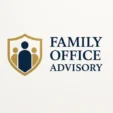Crisis Management Framework #
A crisis management framework prepares the family and the family office to respond effectively to critical events that threaten safety, wealth, reputation, or operational continuity. These events may include cyberattacks, medical emergencies, litigation, extortion attempts, natural disasters, political instability, accidents, or public relations crises. A structured approach ensures rapid, coordinated action to minimize harm and restore normal operations.
Context & Importance #
UHNW families face complex risk exposures due to global travel, public visibility, diversified asset holdings, multiple residences, online presence, and operational dependencies. When crises strike, delayed or uncoordinated action can magnify financial losses, create legal exposure, or disrupt family harmony. A well-designed crisis management framework establishes roles, decision-making tools, communication protocols, and access to professional response teams.
Core Components of Crisis Management #
- Risk identification: Mapping potential external and internal crisis scenarios.
- Preparedness policies: Health, safety, cybersecurity, legal, financial, and travel preparedness.
- Emergency response plan: Immediate steps, decision rights, and activation triggers.
- Communication plan: Internal messaging, advisor coordination, and media handling.
- Roles & responsibilities: Crisis leader, decision-makers, spokespersons, and family liaisons.
- External partners: Security firms, crisis PR specialists, legal counsel, medical teams, and insurance providers.
- Business continuity: Maintaining essential operations during and after the crisis.
- Post-crisis review: Lessons learned, system improvements, and documentation.
Typical Crisis Scenarios #
- Cyber incidents: Ransomware, data breaches, identity theft.
- Physical incidents: Accidents, medical emergencies, home invasions, fires, natural disasters.
- Financial crises: Fraud, liquidity shocks, regulatory sanctions.
- Reputational threats: Media scandals, online misinformation, litigation announcements.
- Security threats: Kidnapping, extortion, stalking, targeted harassment.
- Operational crises: Failures of critical vendors, systems outages, compromised staff.
Implementation & Best Practices #
- Develop a crisis manual: Document procedures, checklists, escalation paths, and essential contacts.
- Appoint a crisis leader: Typically a senior family office executive or trusted family member.
- Maintain an emergency contact matrix: Key advisors, security teams, doctors, legal counsel, insurers.
- Use secure communication tools: Encrypted messaging, backup phones, and redundant channels.
- Run simulations & drills: Practice cyberattack responses, evacuation plans, and PR scenarios.
- Integrate insurance strategies: Apply K&R, cyber insurance, liability coverage, travel insurance.
- Ensure document readiness: Copies of passports, medical plans, insurance policies, and trust documents.
- Coordinate with external experts: Crisis PR firms, risk consultants, and security/intelligence providers.
- Review and update annually: Reflect structural, regulatory, or geopolitical changes.
Common Challenges #
- Slow response due to unclear decision-making.
- Inadequate communication leading to confusion or reputational damage.
- Lack of coordination between family office, advisors, and family members.
- Unpreparedness for cyberattacks or digital disruptions.
- Insufficient documentation for emergency situations.
- Untrained staff or family members during critical events.
See Also #
- Family Security & Risk Protocols
- Cybersecurity & Data Privacy Controls
- Family Communication Protocols
- Vendor Management & Outsourcing Strategy
- Risk Management & Reporting




